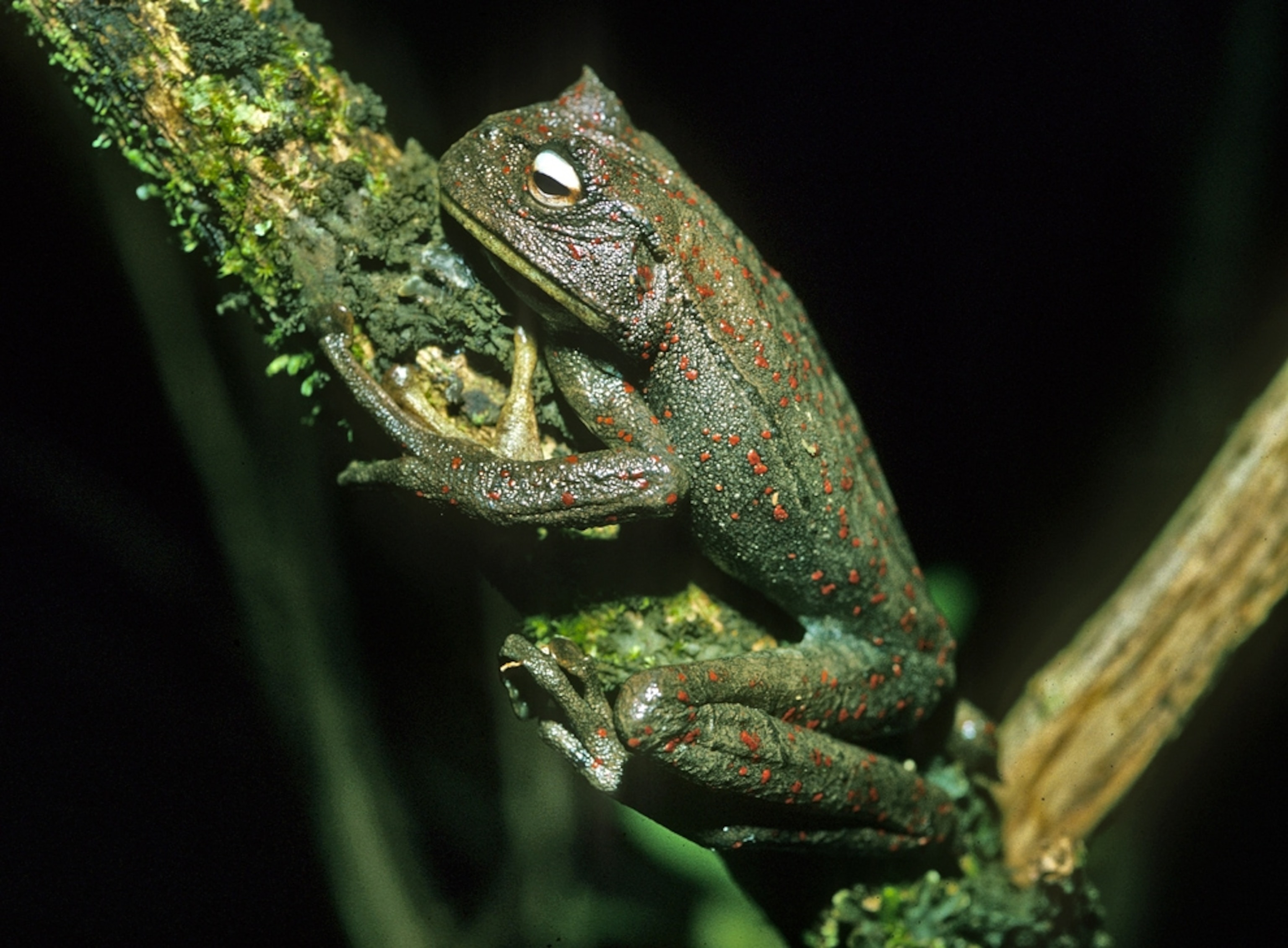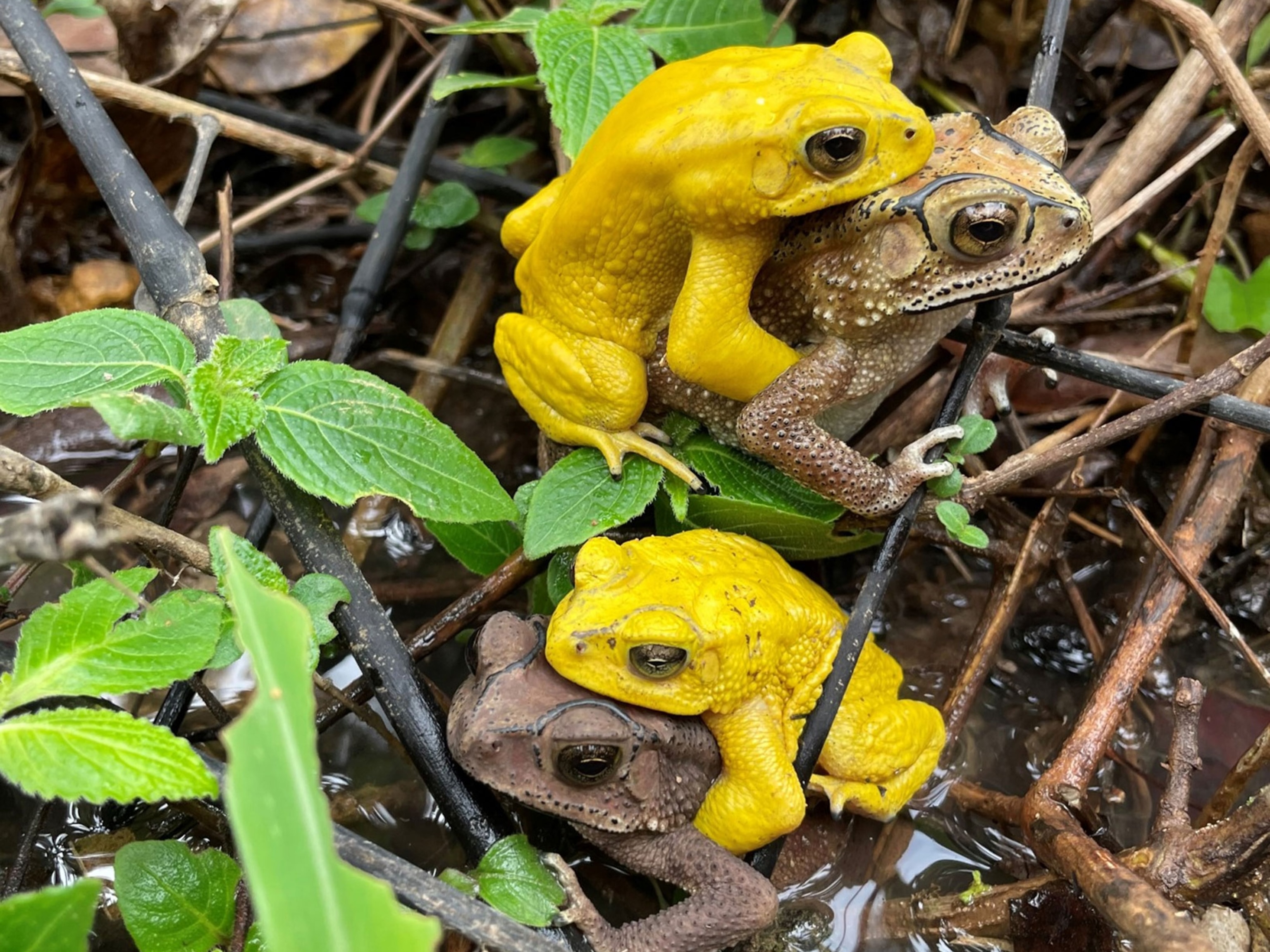
Frogs Evolve Teeth—Again
Mysterious re-evolution challenges evolutionary theory, scientists say.
Lower-jaw teeth in frogs re-evolved after an absence of 200 million years, a new study says. The discovery challenges a "cornerstone" of evolutionary thinking, according to experts.
Of the more than 6,000 species of frogs, only one, a South American marsupial tree frog called Gastrotheca guentheri, has teeth on both its upper and lower jaws. Most frogs have only tiny upper-jaw teeth.
A new analysis of the frog family tree reveals that the common ancestor of frogs, which long had lower-jaw teeth, lost them more than 230 million years ago before eventually going extinct.
The marsupial frog G. guentheri didn't have lower teeth, then "boom, around 5 to 15 million years ago, it got them ... ," said John Wiens, who authored a recent study on the phenomenon.
The discovery runs counter to a principle called Dollo's law, which states that physical structures lost during evolution are never regained, according to Wiens, an evolutionary biologist at Stony Brook University in New York State.
In fact, the teeth's reappearance may have exposed the law's loophole: That it's "much easier to re-evolve things if you're already making them somewhere else," Wiens said.
In other words, the frog "didn't have to make teeth on the lower jaw from scratch, because they're already making them on the upper jaw."
(See "Evolution in Action: Lizard Moving From Eggs to Live Birth.")
"Unassailable" Evidence for Teeth Re-evolution?
In general, losing complex features is common in evolution. Humans and frogs have lost their tails, most snakes have lost limbs, and birds and turtles have lost teeth, according to the study.
But in the past eight years or so, more studies have found evidence of these advanced characteristics springing up again—for instance, wings in stick insects and fingers and toes in lizards.
(See "Sharks Have Genes for Fingers and Toes.")
In his study, Wiens used statistical methods to trace the evolution of teeth on the family tree of 170 amphibian species to frogs' common ancestor. The scientist used a combination of data, including DNA sequences, from modern frogs as well as amphibian fossils.
An alternate theory is that lower-jaw teeth were lost in hundreds of other frog species but not G. guentheri. "It is not impossible, but it is just much, much more likely that teeth were lost once and regained once," said Wiens, whose study appeared online in January in the journal Evolution.
Gunter Wagner, an evolutionary biologist at Yale University, said that, of all the recent research questioning Dollo's law, "this is probably the one that is least disputable."
Some of it was luck, he noted: Wiens found an animal that is isolated enough on the family tree that the results are strong and "unassailable," said Wagner, who was not involved in the study.
"It's a very clear case of reacquisition of a lost complex morphological structure, which, according to current thinking, should not be possible."
Frog-Teeth Re-evolution a Mystery
Less certain, however, is why the teeth came back, both scientists say.
In many frogs teeth aren't that crucial: The animals generally rely more on their tongues than their teeth to catch insects, study author Wiens said.
But for some carnivorous frog species, including a group known as the Pac-Man frogs, teeth are more crucial for catching prey, Wiens said. These animals have fanglike teeth on the upper jaw and have in some cases evolved toothlike spikes on the lower jaw. But, unlike G. guentheri, these lower-jaw spikes are not true teeth.
(Related: "Giant 'Frog From Hell' Fossil Found in Madagascar.")
The fact that toothlike structures appear more often than real teeth means that tooth evolution doesn't automatically occur when the need arises, Yale's Wagner noted.





